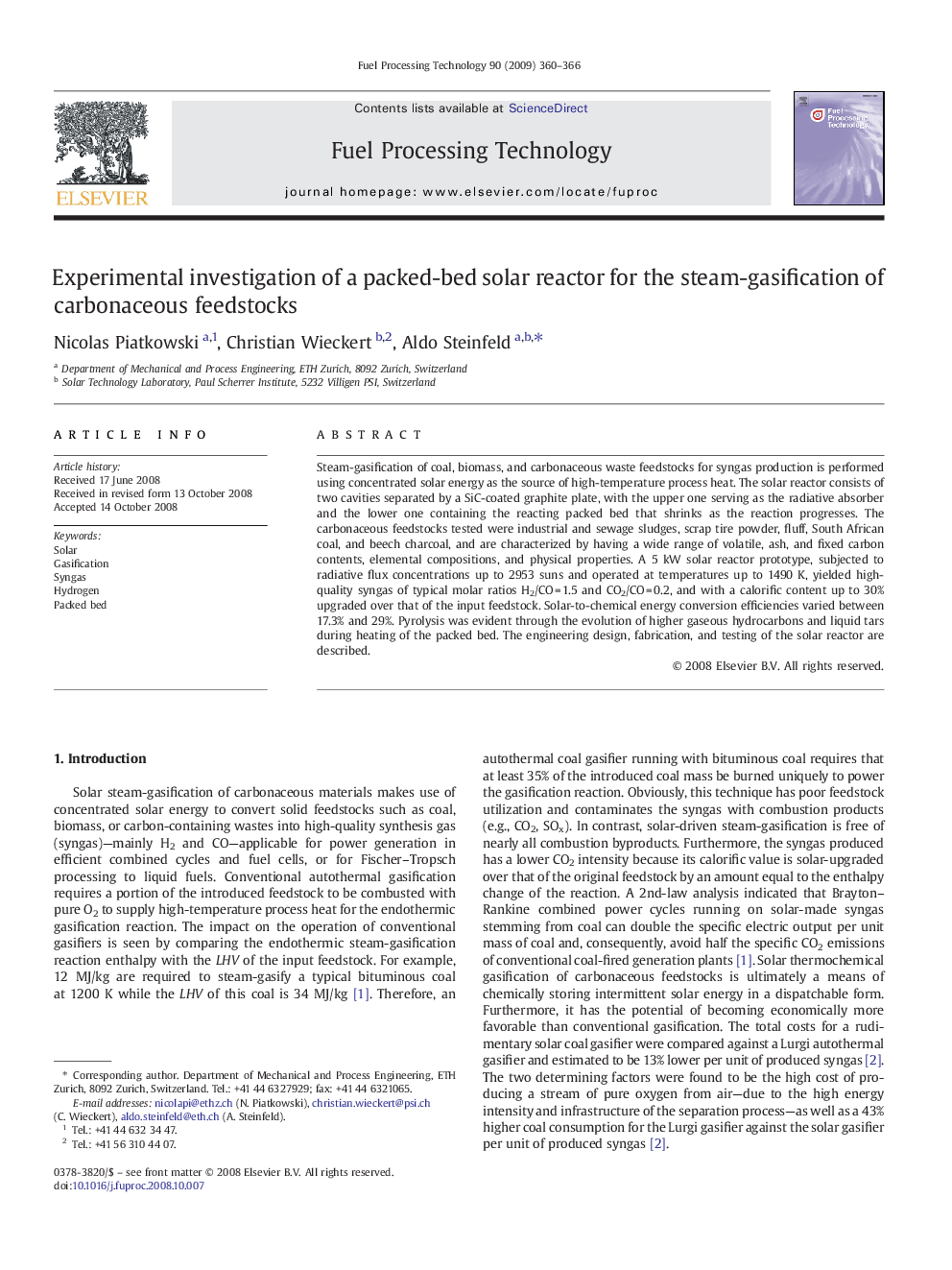| Article ID | Journal | Published Year | Pages | File Type |
|---|---|---|---|---|
| 211128 | Fuel Processing Technology | 2009 | 7 Pages |
Steam-gasification of coal, biomass, and carbonaceous waste feedstocks for syngas production is performed using concentrated solar energy as the source of high-temperature process heat. The solar reactor consists of two cavities separated by a SiC-coated graphite plate, with the upper one serving as the radiative absorber and the lower one containing the reacting packed bed that shrinks as the reaction progresses. The carbonaceous feedstocks tested were industrial and sewage sludges, scrap tire powder, fluff, South African coal, and beech charcoal, and are characterized by having a wide range of volatile, ash, and fixed carbon contents, elemental compositions, and physical properties. A 5 kW solar reactor prototype, subjected to radiative flux concentrations up to 2953 suns and operated at temperatures up to 1490 K, yielded high-quality syngas of typical molar ratios H2/CO = 1.5 and CO2/CO = 0.2, and with a calorific content up to 30% upgraded over that of the input feedstock. Solar-to-chemical energy conversion efficiencies varied between 17.3% and 29%. Pyrolysis was evident through the evolution of higher gaseous hydrocarbons and liquid tars during heating of the packed bed. The engineering design, fabrication, and testing of the solar reactor are described.
